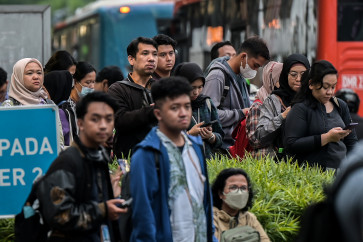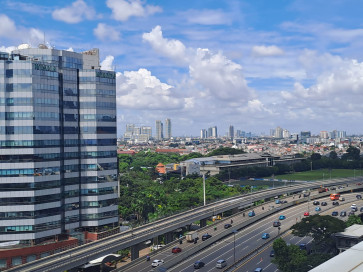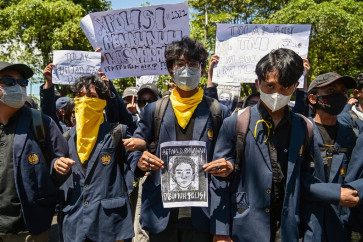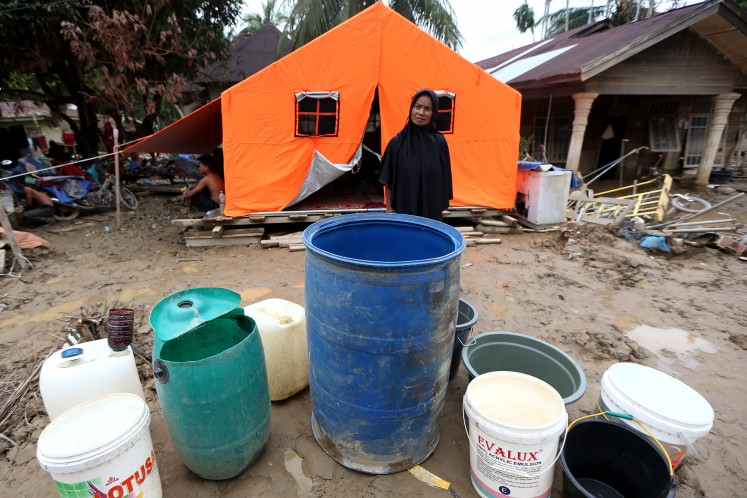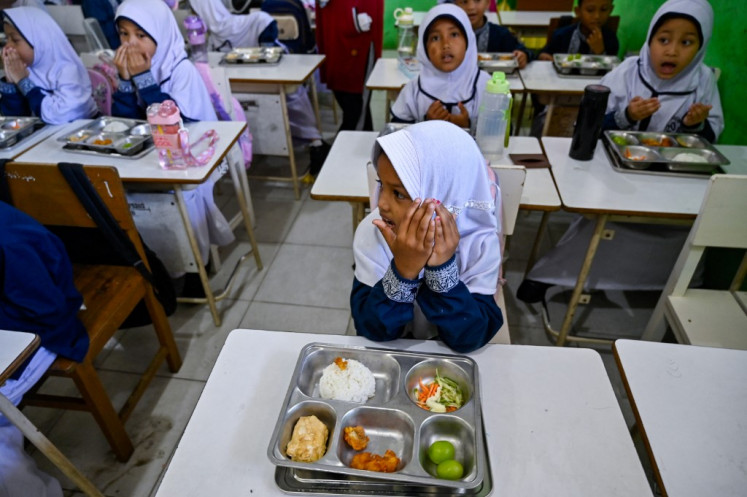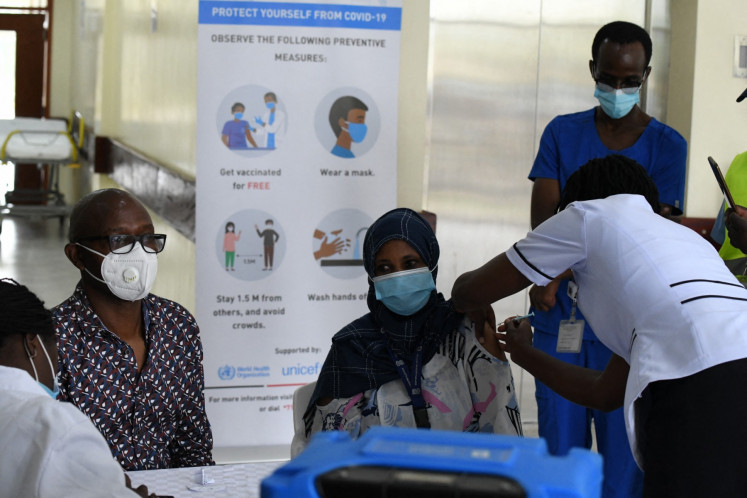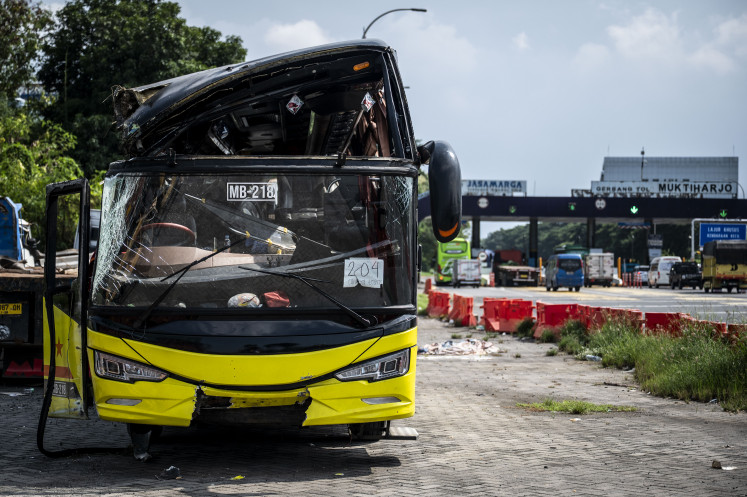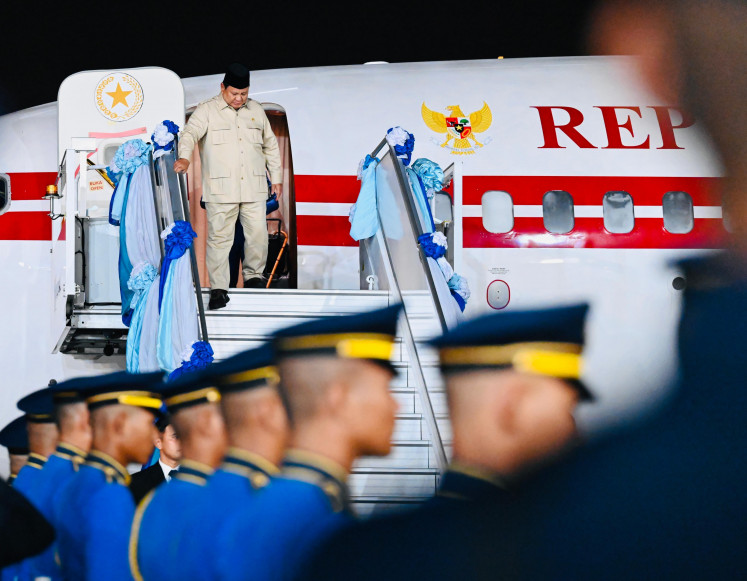Popular Reads
Top Results
Can't find what you're looking for?
View all search resultsPopular Reads
Top Results
Can't find what you're looking for?
View all search resultsWhat the WTO’s deal to curb fisheries subsidies means
The landmark WTO Agreement on Fisheries Subsidies, which entered into force on Sept. 15 after a quarter century of negotiations, is only the beginning in tackling harmful subsidies toward ensuring sustainability of fish stocks, coastal communities and the planet's oceans.
Change text size
Gift Premium Articles
to Anyone
A
fter nearly 25 years of negotiations, the World Trade Organization finally has its first legally binding agreement to tackle government fisheries subsidies. After two-thirds of its members ratified the WTO Agreement on Fisheries Subsidies, the deal has entered into force. It marks a long overdue step toward addressing the role that harmful fisheries subsidies play in overfishing.
Fisheries subsidies can cause harm by distorting markets and creating unequal competition, or so-called “trade injuries”. In addition, they can cause ecological harm by increasing the capacity of fishing vessels and fleets. The result is overcapacity: too many boats chasing too few fish, which often leads to overfishing.
When the WTO talks on fisheries subsidies began in 2001, fish populations were already in decline. Today, 38 percent of fish stocks are overfished and a further 50 percent are fully exploited. That means most of the world’s fisheries are being fished at or beyond their biological limits.
For decades, government subsidies have helped industrial fishing fleets expand, often with little regard for sustainability. These subsidies have distorted access to fish and seafood, fueled overfishing and harmed coastal communities, especially in low-income countries where fish are critical to food security and livelihoods.
This agreement is a major milestone, but it’s only the beginning. Here’s what the agreement covers, why it matters and what needs to happen next to protect ocean health and ensure an equitable ocean economy for coastal communities.
WTO members first raised the issue of harmful fisheries subsidies at the Fourth Ministerial Conference in Doha in 2001. Talks made little headway for years, until the adoption of the United Nations Sustainable Development Goals (SDGs) in 2015.
Target 14.6 of the SDGs explicitly calls on the WTO to “Prohibit certain forms of fisheries subsidies which contribute to overcapacity and overfishing, eliminate subsidies that contribute to illegal, unreported and unregulated fishing and refrain from introducing new such subsidies.” This helped reenergize negotiations, culminating in the adoption of the subsidies agreement at the WTO’s 12th Ministerial Conference in 2022.
The agreement includes three key prohibitions targeting the worst kinds of subsidies.
First, ratifying WTO members must stop subsidizing illegal, unreported and unregulated fishing (Article 3). Second, they must end subsidies for vessels targeting overfished stocks unless they can demonstrate that effective management measures are in place to rebuild those stocks (Article 4). Third, subsidies for fishing on the unregulated high seas are banned (Article 5).
While these measures don’t address all subsidies that contribute to overcapacity, they target some of the most egregious forms of financial support.
Another critical part of the agreement is Article 8, which strengthens transparency and accountability. Members must now provide detailed information annually, including information on fish stocks, conservation and management measures, fleet capacity and the names of subsidized vessels.
Historically, fisheries subsidies data has been patchy and incomplete. Better data will help identify who benefits from public financial support and whether it aligns with sustainability goals.
The agreement also introduces more equitable expectations for developing and least developed countries. These members are granted an extra two years before they must implement subsidy prohibitions and crucially, can access the WTO Fish Fund, a mechanism that helps countries implement the agreement through technical assistance and partnerships.
While the agreement does not fully level the playing field, it establishes that major subsidizers must carry the greatest burden.
Despite its strengths on paper, the agreement only covers a fraction of the estimated US$22 billion in harmful fisheries subsidies provided by governments each year. The most prevalent of all the harmful subsidies, fuel subsidies, remain largely untouched.
Another major limitation is that it only applies to countries that have ratified the agreement. As of now, some major subsidizers including Indonesia and Thailand, two of the world’s top 10 subsidy providers, have yet to ratify it.
In a 2021 report we wrote for ocean conservation group Oceana, we found that just 10 countries are responsible for 64 percent of global harmful subsidies. Even with this agreement in force, large gaps will remain without their participation.
Another challenge is ensuring transparency and data disclosure. While the agreement includes stronger notification requirements, it lacks detailed reporting guidelines. Much of the implementation will depend on self-reporting and peer accountability between members.
Without clear standards or enforcement mechanisms, many subsidy programs could remain opaque or underreported. To have real impact, the WTO must develop robust and standardized reporting frameworks.
Whether the fisheries subsidies agreement will save fish or merely face will come down to how it is implemented. Success will hinge on whether WTO members hold each other accountable and whether industry, civil society and researchers can push their governments toward genuine compliance.
Importantly, this agreement was never meant to be the end of the subsidies conversation. Its entry into force triggers a four-year countdown to negotiate the next phase. This must address the most damaging subsidies of all – those that fund fishing by rich foreign fleets in the waters of other nations and those that drive overcapacity – to achieve a comprehensive agreement. These policies have the greatest potential ecological and equity impact but are the hardest to reach consensus on.
Fortunately, we’re now closer to that goal. The agreement’s entry into force provides the ideal platform from which SDG Target 14.6 can be fully achieved. Putting an end to billions in fishing subsidies would restore fish stocks, support coastal communities and improve ocean health for all. The job is not yet done.
---
Daniel Skerritt is an affiliate researcher with the Fisheries Economics Research Unit at the University of British Columbia, where Rashid Sumaila is director. This article is republished under a Creative Commons license.



